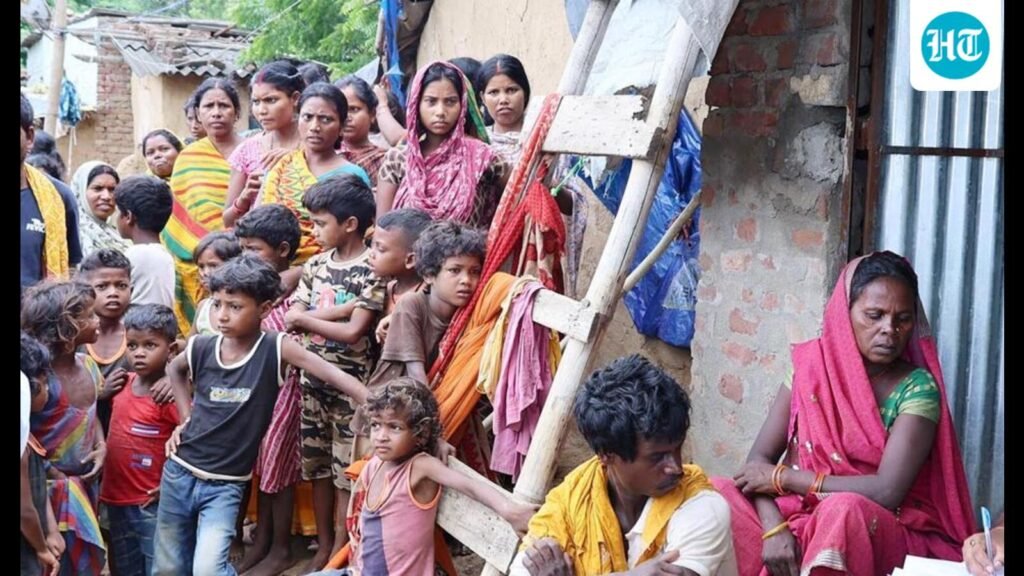
For more than two decades, Nitish Kumar has been chief minister (CM) of Bihar. For about a dozen years, his deputy and finance minister was the late Sushil Kumar Modi of the BJP. Did these two stalwarts do justice to Bihar? Their financial management record reveals that Bihar has ended up as one of India’s most fiscally fragile states under them.

The CAG reported recently that Bihar has no utilization certificates for over 70,000 crore of expenditure! This is extraordinary mismanagement of public resources. Other states leveraged their resources and central aid to build a stable base for growth. Bihar’s trajectory has been one of weak revenue mobilisation, over-reliance on the Centre, and underinvestment in productive assets. These have locked Bihar into a cycle of low growth and limited capacity.
In 2025-26, Bihar’s own tax revenue is projected at just 5.4% of Gross State Domestic Product (GSDP), lower than the revised estimates of 2024-25. This weak tax effort leaves Bihar overwhelmingly dependent on the Centre; nearly 74% of its revenue receipts come from devolution and grants. Such dependence may cushion the exchequer in the short run, but it leaves Bihar exposed to fluctuations in central finances and vulnerable to Finance Commission formulas rather than reliant on its own economic dynamism.
Bihar’s fiscal weakness is not new. In the mid-2000s, when Kumar started his long innings as CM, higher central transfers and debt relief provided temporary relief, but expectations of a turnaround were high. The 14th Finance Commission boosted the state’s share of devolution. Yet, instead of strengthening tax mobilization or expanding capital expenditure, Bihar continued to lean on transfers. Once those inflows stabilized, the imbalance returned.
Its debt profile underlines the problem. In 2025-26, Bihar’s debt-to-GSDP ratio is budgeted at 37%, higher than comparable states. Interest payments alone are expected to consume over 9% of revenue receipts this year. On the deficit side, the mismatch between projections and reality are glaring. Budgets typically peg the fiscal deficit around 3-3.5% of GSDP. But the 2024-25 Revised Estimates show the deficit touching 9.2%. This persistent slippage, where optimistic budgeting conceals structural imbalances that only surface later, is a recurring feature of Bihar’s fiscal story.
Compounding this is the weight of committed expenditures. Salaries, pensions, and interest absorb around 42% of revenue receipts, leaving little room for discretionary development spending. These numbers are not just abstractions. They dictate whether Bihar can expand hospital capacity, recruit teachers, or build the roads and power networks necessary to attract industry. Bihar’s constrained finances perpetuate its low-income equilibrium.
The developmental consequences are stark. Between 2012-13 and 2021-22, Bihar’s real GSDP grew at an average of 5%, below the national average of 5.6%. More worryingly, its share of India’s GDP has shrunk; from 3.6% in 1990-91 to 2.8% in 2021-22. Per capita income paints an even bleaker picture; in 2021-22, Bihar’s income was just 30% of the national average, a gap that has widened despite decades of central support (Niti Aayog Report, March 2025).
Between 2015-16 and 2023-24, Bihar’s per capita Net State Domestic Product (NSDP) rose from 30,404 to 60,337 (ESI 2024-25). But compare it to Jharkhand, which was carved out of Bihar. Jharkhand’s per capita NSDP rose from 52,754 to 1,05,274 (ESI 2024-25).
Fiscal weakness has reinforced social stagnation. Nearly 88% of Bihar’s population still lives in rural areas, underlining the absence of urbanization and industrialisation. Human development indicators remain poor: The sex ratio at birth is below the national average, and literacy stands at just 61.8% against India’s 73% (2011 Census). Multidimensional poverty levels remain among the highest in the country. Niti Aayog ranked Bihar as India’s poorest state.
Weak revenue effort, dependence on central transfers, and neglect of education, health, and infrastructure have kept the state trapped in a cycle where fiscal fragility feeds underdevelopment.
The next government must strengthen Bihar’s own revenue mobilisation. Second, it must reprioritise expenditure. Social welfare is vital in a state with deep poverty, but subsidies must not crowd out long-term investments in infrastructure, education, and health. Third, it must better leverage central transfers. Bihar must use these funds to build lasting capacity. Industrial clusters, agriculture value chains, and skill development should be at the center of this strategy.
Finally, fiscal transparency and realism in budgeting are essential. Repeated slippages, from projected deficits of 3% to actual deficits of nearly 9%, reflect governance failures that must be corrected.
Rajeev Gowda is chairman of the AICC research department and a former Rajya Sabha MP and Srijan Thakur is a lawyer and policy consultant. The views are personal





